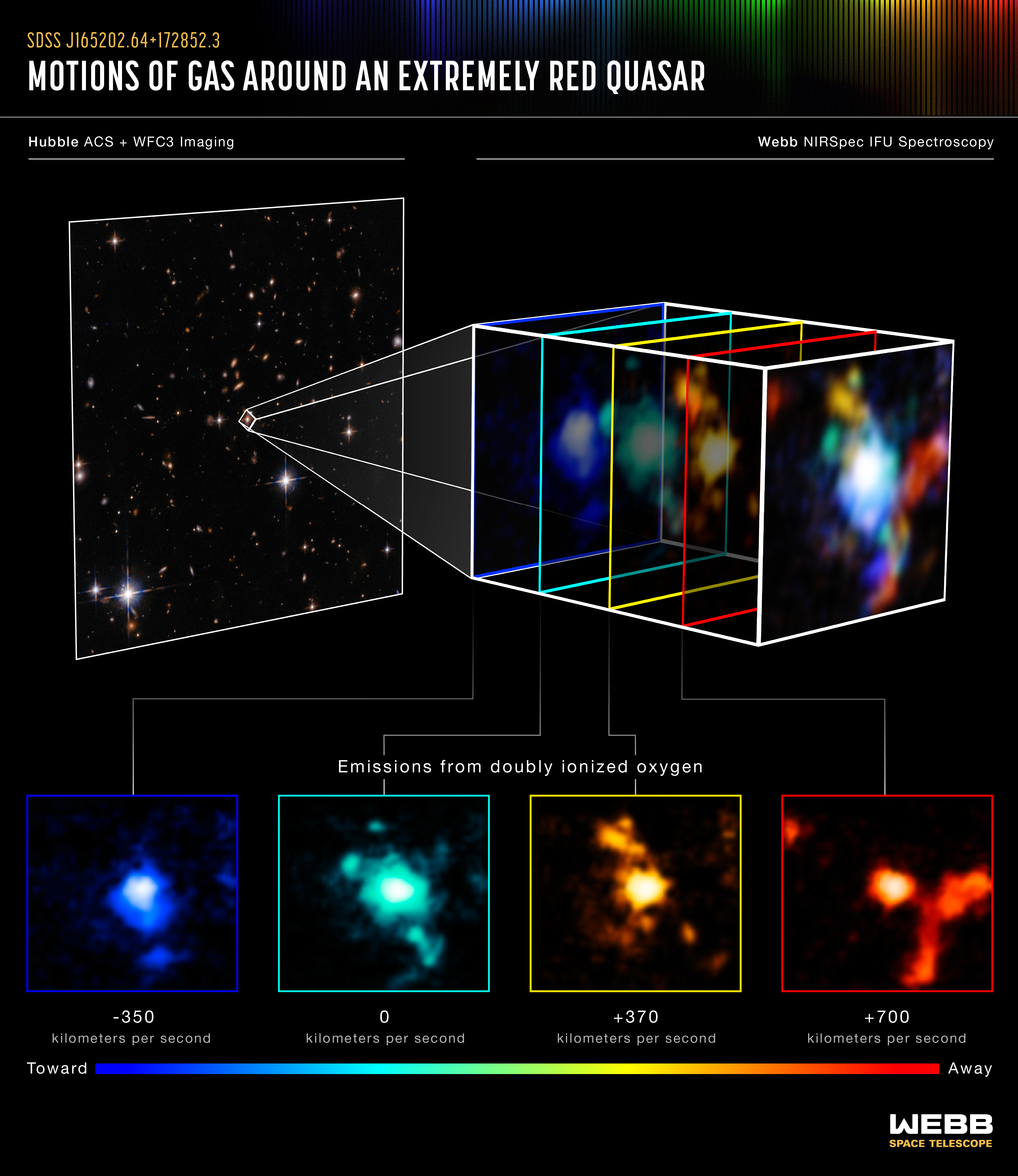Three ancient galaxies have been caught in the act of merging around a so-called “extremely red quasar”, providing fascinating new insights into how modern galaxy clusters may have formed. The event – which was spotted by NASA’s JWST – occurred some 11.5 billion years ago in what may have been one of the densest areas of galaxy formation in the early universe.
Extremely red quasars are a rare and highly luminous type of active galactic nucleus that are not found anywhere in our cosmic neighborhood. They occur when black holes at the center of massive galaxies devour matter from a surrounding accretion disk, resulting in an incredibly powerful outflow of ionized gas.
The quasar in question was originally identified by the Hubble Space Telescope, which highlighted some of its outflows and led to speculation that it may have existed at the heart of a galaxy merger. “With previous images we thought we saw hints that the galaxy was possibly interacting with other galaxies on the path to merger because their shapes get distorted in the process and we thought we maybe saw that,” explained Nadia L. Zakamska, author of a soon-to-be-published study on the quasar, in a statement.
However, after re-examining the cosmic beast using JWST’s Near Infrared Spectrograph (NIRSpec), astronomers were stunned to discover at least three separate galaxies swirling around the quasar. By mapping the movement of colossal amounts of material contained within this busy pocket of the early universe, researchers were able to conclude that the quasar was indeed at the center of a dense knot of galaxy formation.
Circling the quasar at a distance of around 39,000 lightyears, the three companion galaxies are moving at incredibly high speeds, indicating that an enormous amount of mass is present within the cluster. Exactly where all this mass originates, however, is something of a mystery.

NASA’s JWST was able to capture the region in more detail than Hubble, revealing the velocities and direction of motion of each companion galaxy. Image credit: NASA, ESA, CSA, STScI, D. Wylezalek (Heidelberg Univ.), A. Vayner and N. Zakamska (Johns Hopkins Univ.) and the Q-3D Team
“Even a dense knot of dark matter isn’t sufficient to explain it,” said study author Dominika Wylezalek. “We think we could be seeing a region where two massive halos of dark matter are merging together.”
Dark matter halos are hypothetical regions of dark matter that have never been directly observed but which are thought to envelop galaxies.
By peering into the early universe and observing events such as this, JWST may help astronomers piece together how some of the structures we see in the cosmos came to exist. In this case, the examination of such a dense region of galaxy formation 11.5 billion years ago could shed new light on how galaxies eventually organized themselves into the cosmic web.
“There are few galaxy protoclusters known at this early time. It’s hard to find them, and very few have had time to form since the big bang,” said Wylezalek. “This may eventually help us understand how galaxies in dense environments evolve. It’s an exciting result.”
The study is in press in Astrophysical Journal Letters and available to view now at arXiv.
Source Link: JWST Spots Multiple Galaxies Merging Around "Monster" Black Hole 11.5 Billion Years Ago